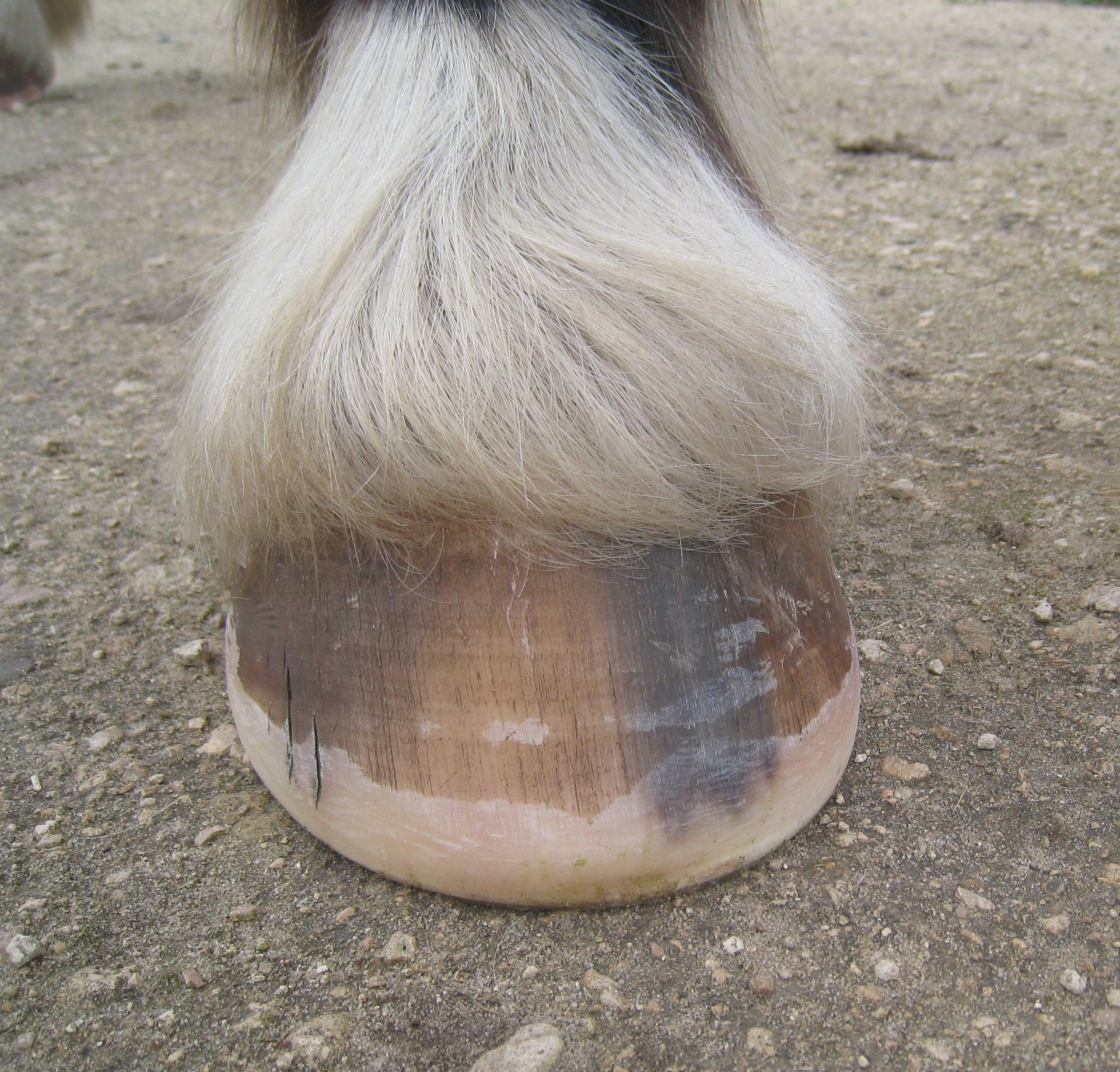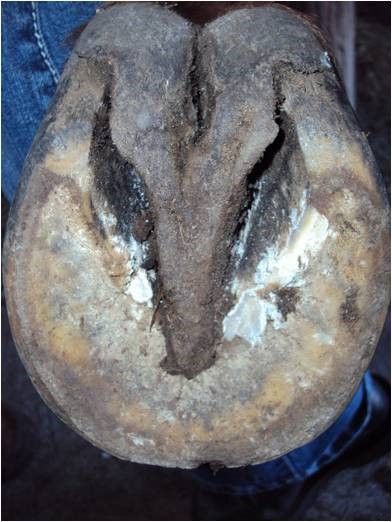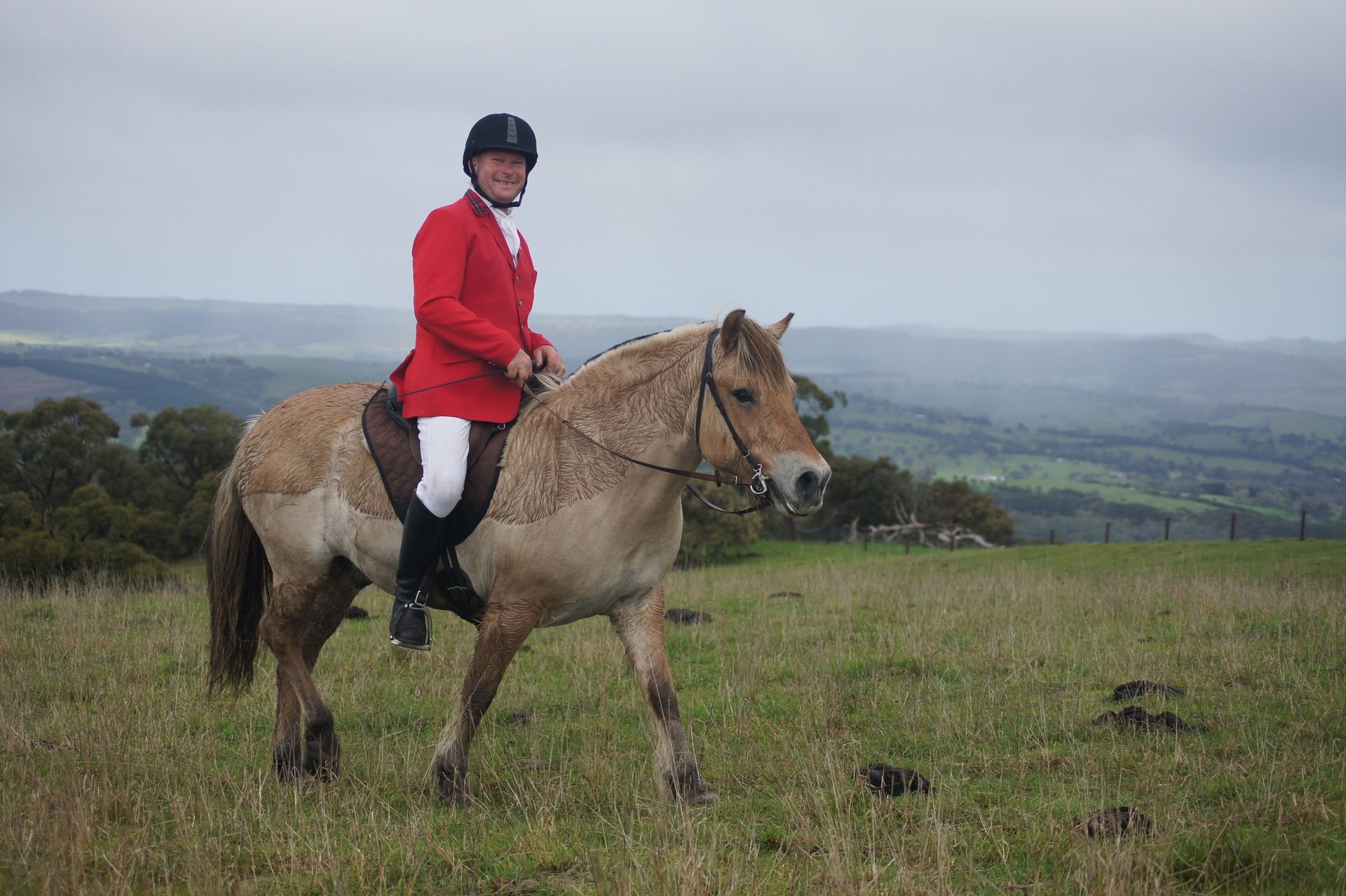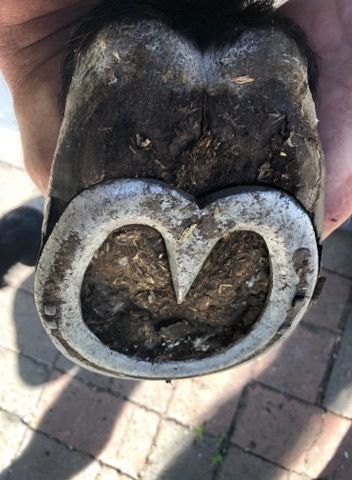SOMETIMES HOOF TRIMMING HAS TO WAIT
Get the job done despite the dangers and bad habits, or make life easier for everyone in the long term?

Recently, a horse arrived here for starting to saddle. She arrived with long feet in need of a
trim. I was itching to get them done
but it wasn’t that simple!
One of the first issues I found when I began to handle her was problems with leg handling. When trying to lift up a front foot, she would be inclined to paw the air and just touching or brushing a hind leg was a cue for her to walk away. She had obviously had her feet trimmed many times before she came to me but I was easily able to guess how she had been handled for previous hoof trims. I asked the owner “did the previous hoof care professional use force rather than training to get the job done? Force such as keeping the leg held up with brute strength and encouraging her to hop away, then moving with the horse until it was up against the rail or building?” The client said “Yes! That’s exactly what happened!
The previous hoof care
professional had kind of got the job done but the owner was unable to pick up
the feet for cleaning, etc. because the horse either planted it’s feet or just
moved away. This kind of forced
trimming, among other kinds such as tying the legs up, helps the hoof care
professional get the job done at the time but it doesn’t teach the horse to
stand still and hold the leg up for anyone else who may not be as strong. It also does not teach the horse to balance
and lift its own leg for you. The horse is inclined to still lean on people and
give a lot of resistance to lifting. Who
wants to work against the horse like that? Certainly not me!
We want to teach the horse to work with us,
making life easier for us and less stressful for the horse. As a hoof care professional, I can do also do
a much better trimming job when the horse is standing still and balanced rather
than when I’m fighting it. Fighting
horses damages my body and many hoof care professionals have to prematurely
retire due to bad backs/knees/hips/shoulders from fighting horses who won’t cooperate.
I believe the key is in the training but this means a bit of patience. The trimming can wait!
There are other benefits to owners of being able to handle the horses’ legs and pick up their feet easily and safely. For example, if you are riding down the road and the hoof picks up a stone, the horse needs to be able to stand still and lift its leg to get the stone out easily.
With this particular young horse, I knew I needed to train
her to cooperate with me before I even attempted to trim her feet and put
myself at risk.
I was able to train
her without tying her legs up with hobbles or any other such restraining devices. I feel that these methods also just teach a horse to stand on three
legs and not keep still and lift a leg in a balanced way on command. It’s also not convenient for us to use
straps whenever we want to achieve stillness.
How I started was to simply reinforcing standing - just standing still
while I groomed her. I brushed down her
legs and if she moved I would reach up to the lead rope and put her back in the
original place also using a verbal command “stand”.
I did this on a daily basis until the horse
felt relaxed and calm and allowed me to brush her legs without moving. Soon she let me brush her legs without
moving away and it was only after this was achieved that I attempted to lift
the legs. I also do the legs in the same
order every day because horses are creatures of habit and routine which makes
them feel confident and relaxed.
Once I got to the leg lifting stage, I engaged an assistant to help balance the horse and lighten weight on the leg I wanted to lift making it clearer and easier for her to understand what I required. I would lift for just a moment and then put it down gently. Always during these sessions, I kept to the same order and routine.
I would then do
ground work with the horse (more about this in later blogs) and groom her at
the finish, again picking up her feet.
Now, I can ask her to stand and lift her legs wherever I am, always
making sure that first she is balanced in such a way that lifting the correct
leg is easy for her, rather than me doing the work of lifting it. Once the horse was able to do this, she was
ready to trim and I could do a better job too.
Persistence and routine is the key to this leg training. This filly has now gone home with lovely feet and her owner is able to handle them easily.







